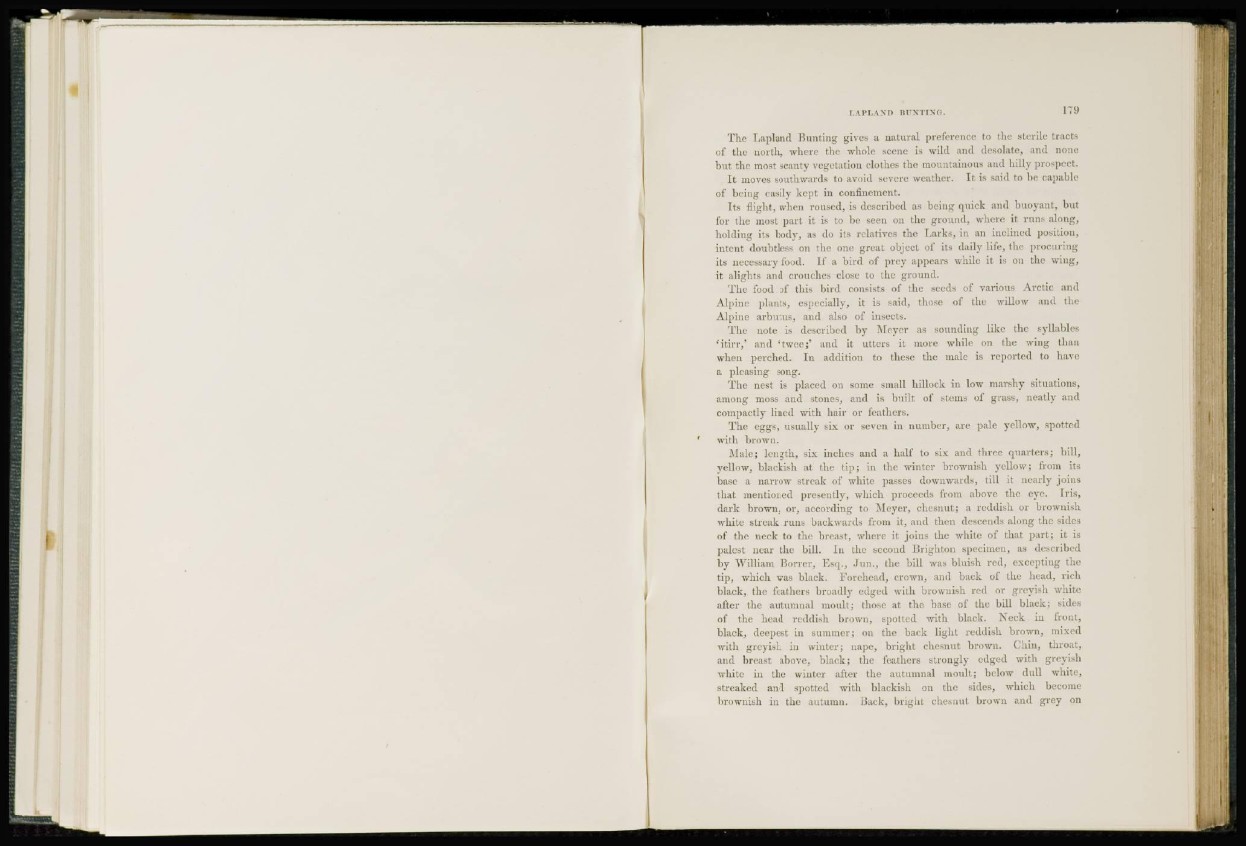
The Lapland Bunting gives a natural preference to the sterile tracts
of the north, where the whole scene is wild and desolate, and none
but the most scanty vegetation clothes the mountainous and hilly prospect.
It moves southwards to avoid severe weather. It is said to he capable
of being easily kept in confinement.
its flight, when roused, is described as being quick and buoyant, but
for the most part it is to be seen on the ground, where it runs along,
holding its body, as do its relatives the Larks, in an inclined position,
intent doubtless on the one great object of its daily life, the procuring
its necessary food. If a bird of prey appears while it is on the wing,
it alights and crouches close to the ground.
The food of this bird consists of the seeds of various Arctic and
Alpine plants, especially, it is said, those of the willow and the
Alpine arbutus, and also of insects.
The note is described by Meyer as sounding like the syllables
'itirr,' and 'twee;' and it utters it more while on the wing than
when perched. In addition to these the male is reported to have
a pleasing song.
The nest is placed on some small hillock in low marshy situations,
among moss and stones, and is built of stems of grass, neatlv and
compactly lined with hair or leathers.
The eggs, usually six or seven ill number, are pale yellow, spotted
with brown.
Male; length, six inches and a half to six and three quarters; bill,
yellow, blackish at the tip; in the winter brownish yellow; from its
base a narrow streak of white passes downwards, till it nearly joins
that mentioned presently, which proceeds from above tin1 eye. Iris,
dark brown, or, according to Meyer, chesnut; a reddish or brownish
white streak runs backwards from it, and then descends along the sides
of the neck to the breast, where it joins the white of that part; it is
palest near the bill. In the second Brighton specimen, as described
by William Boner, Esq., Jan., the bill was bluish red, excepting the
tip, which was black. Forehead, crown, and back of the head, rich
black, the feathers broadly edged with brownish red or greyish white
after the autumnal moult; those at the base of the bill black; sides
of the head reddish brown, spotted with black. Neck in front,
black, deepest in summer; on the back light reddish brown, mixed
with greyish in winter; nape, bright chesnut brown. Chin, throat,
and breast above, black; the feathers strongly edged with greyish
white in the winter after the autumnal moult; below dull white,
streaked and spotted with blackish on the sides, which become
brownish in the autumn. Back, bright chesnut brown and grey on